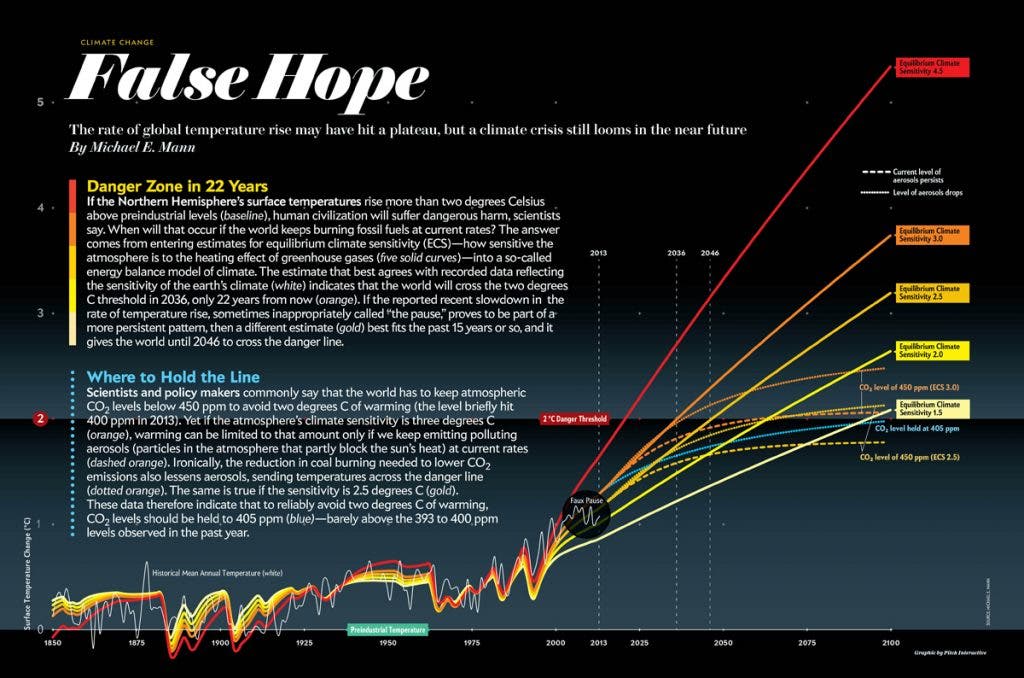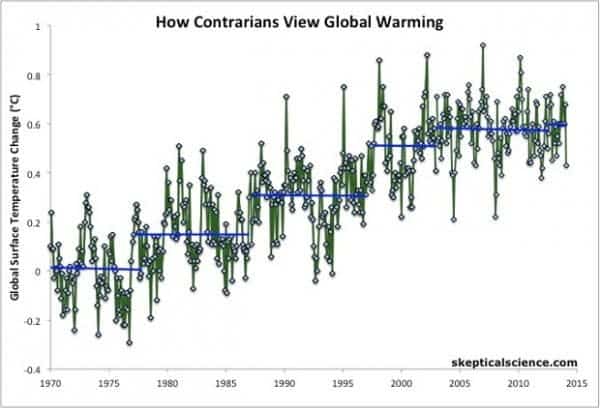One of the prime arguments climate change skeptics throw about is how surface temperatures have remained more or less constant for the past 15 years, hence there is no man-made global warming – it’s all a sham, a conspiracy to keep scientists busy with gratuitous grants and fill Al Gore’s pockets. I’ve written previously about models and observations that explain this temporary hiatus. Now, a new study confirms some previous hypotheses which weren’t supported by data. According to a team of leading US climate scientists, the slowdown in the rate of warming we’re currently experiencing can be mainly attributed to the timing of two large ocean cycles. In short, the cooler cycle is trumping over the warmer one, hence the muted warming. When the pattern will reverse – and it’s only a matter of time – the world will likely feel a sudden warming spike, as it has happened before.
Where’s all my missing heat? Hold your horses…
The team entered data made of temperature readings from 1880 to 2010 in a slew of climate models. Their computations showed that the timing between two cycles, the Pacific multidecadal oscillation and the Atlantic multidecadal oscillation, is currently off balanced towards the cooler side. These warmer and cooler periods of the Pacific and Atlantic ocean can last for up to decades, driven by large circulations of water across these. Usually, when the Pacific is warming, the Atlantic is cooling, and vice-versa. This way, the two offset each other and maintain a fairly stable surface temperature in the Northern Hemisphere. For the past decade, the magnitude of northern Pacific cooling has been greater than that of northern Atlantic warming, according to the paper published in Science. This translates in a new slowdown of the rate of warming. In other words, if the two oceans were in offset cycle, we’d have felt larger surface temperatures today. Even so, 2014 was the warmest year on record.
According to the researchers, based on the natural cycles over the past 130 years, the offset trend “will likely reverse…adding to anthropogenic warming in the coming decades.” When this reversal will take place is difficult to say at the moment, but historically we’re nearing its peak and should reverse in the coming decade. According to calculations made separately during another work by Michael Mann, director of the Earth System Science Center at Pennsylvania State University, and one of the paper’s three authors, global warming would rise to two degrees Celsius by 2036 (compared with preindustrial levels). Even if the hiatus were to persist, Earth surface temperatures would still reach these levels by 2046. His work is summarized in the graph below, where Dr. Mann plots temperature rise patterns for various scenarios.

Once the planet warms by 2 degrees Celsius relative to pre-industrial levels, experts believe a dangerous threshold will be passed. Image: Michael Mann
Of course, the ocean multidecadal oscillation aren’t alone. Surface temperatures are also masked by the deep oceans which have become considerably warmer, oscillation or not. Then, of course, there’s El Niño and La Niña – the warm phase in the pressure shift between the eastern and western tropical Pacific and the cool phase, respectively. The graph below shows have surface temperatures have plateaued and risen again, cycle after cycle, since the 1960s.

“This is the latest in a series of warm years, in a series of warm decades. While the ranking of individual years can be affected by chaotic weather patterns, the long-term trends are attributable to drivers of climate change that right now are dominated by human emissions of greenhouse gases,” NASA GISS director Gavin Schmidt said,










